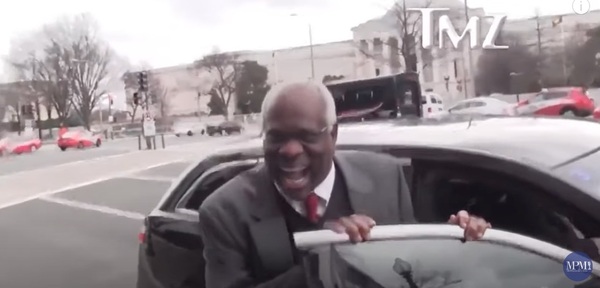
–>
June 27, 2022
Diana Ross and the Supremes were one of the biggest Motown musical groups in the 1960s. By 1970 they went their separate ways, but this past week, their informal namesakes scored a mega-hit. Not singing catchy pop tunes, but by dancing in their black robes, singing glory and praise to the United States Constitution, making it great again.
‘); googletag.cmd.push(function () { googletag.display(‘div-gpt-ad-1609268089992-0’); }); }
I speak of the US Supreme Court, finding their constitutional voices on two major issues that have polarized and divided Americans for decades. SCOTUS was not created to make law or decide controversial social or policy issues. In a constitutional republic, those issues are decided by the people, or their elected representatives, not by unelected, lifetime appointed judges.
Instead, SCOTUS’s role is to determine whether laws passed by the legislative branch or administrative decisions emanating from the executive branch are constitutional. From the SCOTUS website,
The Court is the highest tribunal in the Nation for all cases and controversies arising under the Constitution or the laws of the United States. As the final arbiter of the law, the Court is charged with ensuring the American people the promise of equal justice under law and, thereby, also functions as guardian and interpreter of the Constitution.
‘); googletag.cmd.push(function () { googletag.display(‘div-gpt-ad-1609270365559-0’); }); }
While Diana Ross and her Supremes sang, “Stop in the name of love”, Clarence Thomas and his Supremes did a remake, “Stop in the name of law”, specifically the US Constitution. Two big decisions in two days. Was this “The Storm” that President Trump once predicted? Or just a “boom-boom” end to a week where we saw another two booms — the President falling off his bicycle then showing off his cue card telling him, as one would a young distractible child, where to sit, as in “YOU take YOUR seat” and when to get up and leave as in “YOU depart”.

YouTube screen grab
The first boom decision was to affirm that Americans have a right to carry firearms in public for self-defense. Why is this controversial? The Second Amendment to the Constitution states clearly, “The right of the people to keep and bear arms, shall not be infringed.”
This decision went beyond the Heller case of 2008, where SCOTUS affirmed the right to possess a gun for self-defense in the home. Now Americans can defend themselves outside the home as well, a necessary clarification as the Second Amendment did not add specific locations to their “keep and bear arms” proclamation, as many people need to protect themselves outside of their homes too.
“Arms” does not refer only to muskets and cannons, as the New York Governor and US President believe, but modern-day versions of these 250-year-old “arms”. There is a commonsense element here that “arms” don’t include thermonuclear bombs, machine guns, or ballistic missiles which ordinary Americans cannot and should not possess, but instead the “arms” of the day including handguns and even scary looking rifles.
If we followed the logic of the musket and cannon arguers, the First Amendment protections of free speech should not protect radio, television, internet, or social media as these forms of speech did not exist when the Bill of Rights was drafted, just as Glocks and AR-15s were not on the minds of the framers at that time either. In their wisdom, they simply used the term “arms” just as the First Amendment used vague terms “speech” and “press”, allowing for future variations and inventions.
The second boom ruling overturned the controversial Roe v. Wade decision from 1973 which legalized abortion, although with some limits. It took almost 50 years for SCOTUS to get the Constitution straight. As Diana Ross and her Supremes sang, “You can’t hurry love”, SCOTUS has been singing, since 1973, a remake called, “You can’t hurry law.”
‘); googletag.cmd.push(function () { googletag.display(‘div-gpt-ad-1609268078422-0’); }); } if (publir_show_ads) { document.write(“
Even liberal former SCOTUS Justice Ruth Bader Ginsburg acknowledged that Roe was “structured” badly, focusing on “privacy”, of which there is no specific “right to privacy” in the Constitution, rather than the “equal protection” provision of the Constitution.
Even that argument falls flat based on the Tenth Amendment,
The powers not delegated to the United States by the Constitution, nor prohibited by it to the States, are reserved to the States respectively, or to the people.
For non-lawyers, such as myself, this is a no-brainer. Any right or power not in the Constitution should be decided by the individual states and the people in those states. This includes not only the right to abortion, but also same-sex marriage, prostitution, recreational marijuana, gambling, driving age, all of these now, turned over to the states to decide. Same-sex marriage was a state issue until the 2015 Obergefell vs Hodges SCOTUS decision.
States can sort these issues through a ballot referendum or through their legislatures, elected by and representing the people in those states. Each state can decide whether to and how to allow or restrict these and many other activities not expressly mentioned in the Constitution. Again, this reflects the genius of the framers, leaving a mechanism for future issues to be adjudicated.
Perhaps in the future, when robots and artificial intelligence are the norm, there will be new concerns, things we cannot envision now, but if America is still functioning as a constitutional republic, there will be a mechanism to handle these new issues.
CNN reports, “Half of US states could ban abortion as Roe v Wade overturned.” As virtual all abortions are elective, the urgent ones characterized as miscarriages, one could travel to a state where abortion is legal and have it performed. People travel frequently for medical care, many visiting Mayo or Cleveland Clinics for their experience and expertise in neuro or cardiac surgery that might not be available in their home states.
If residents of Utah or Idaho wants to gamble or visit a prostitute, and cannot in their own state, their neighboring state of Nevada allows both. They could do the same for an abortion. Interestingly, woke employers are eager to foot the bill for employees to travel out of state for an abortion. Do the corporations revere abortion? Or would they prefer to pay for an abortion rather than childbirth, months of maternity leave, and another covered life on their insurance plan? Follow the money.
My state of Colorado was the first to legalize recreational marijuana and Americans from all 49 other states visited so they could partake in an activity not legal in their states. Colorado, aside from marijuana tourism, is well positioned for abortion tourism as the state passed a law this year placing no limits on abortion, “Colorado’s law protects the right to have an abortion and does not make distinctions or regulations around a time or stage during pregnancy.”
Colorado’s permissive law means that a woman, 40 weeks pregnant, can walk up one street to the hospital to deliver a healthy full-term baby, or down another to a Planned Parenthood clinic to abort that same healthy full-term baby. This is what must be meant by “a woman’s right to choose.” Some choice.
It’s ironic that the same woman may have no right to choose whether or not to be COVID vaccinated, depending on her employer. It seems “my body, my choice” is situational.
But now each state can decide what they will allow or not allow, and Americans can choose to move to or leave states based on these state laws. This is the ultimate in “pro-choice”.
Justice Kavanaugh wrote in his opinion, “That issue will be resolved by the people and their representatives in the democratic process in the States or Congress.” As it should be.
Finally, SCOTUS is finally following the US Constitution, exactly their mission, restoring the Second and Tenth Amendments. Too bad many cannot seem to understand this concept, including many lawyers, who presumably studied constitutional law in law school, and are now gracing the halls of Congress or cable news studios.
Like energy, constitutional rights can neither be created nor destroyed. Congress can pass laws and the states can amend the Constitution. It’s been almost 50 years since the Roe decision, and neither of these remedies has been applied to make abortion a constitutional right, leaving it up the states to decide, as it should be for a self-governing country.
Left-wing Newsweek noted this, “Barack Obama blasted for not codifying Roe v Wade: Dem failure.” He had a veto proof majority in Congress and squandered to opportunity to fix this issue legislatively. Perhaps Democrats don’t care about abortion per se, instead preferring it as a campaign issue.
This is an educational moment where schools can teach kids about the Bill of Rights and Constitution rather than drag queen story hour, so decisions such as the Roe overturning isn’t such a surprise or controversy. Then Samuel Alito and his Supremes can do another remake of “Someday we’ll be together” rather than “Where did our law go”.
Brian C Joondeph, MD, is a physician and writer. Follow me on Twitter @retinaldoctor. And on Truth Social @BrianJoondeph.
<!– if(page_width_onload <= 479) { document.write("
“); googletag.cmd.push(function() { googletag.display(‘div-gpt-ad-1345489840937-4’); }); } –> If you experience technical problems, please write to helpdesk@americanthinker.com
FOLLOW US ON
<!–
–>
<!– _qoptions={ qacct:”p-9bKF-NgTuSFM6″ }; ![]() –> <!—-> <!– var addthis_share = { email_template: “new_template” } –>
–> <!—-> <!– var addthis_share = { email_template: “new_template” } –>




